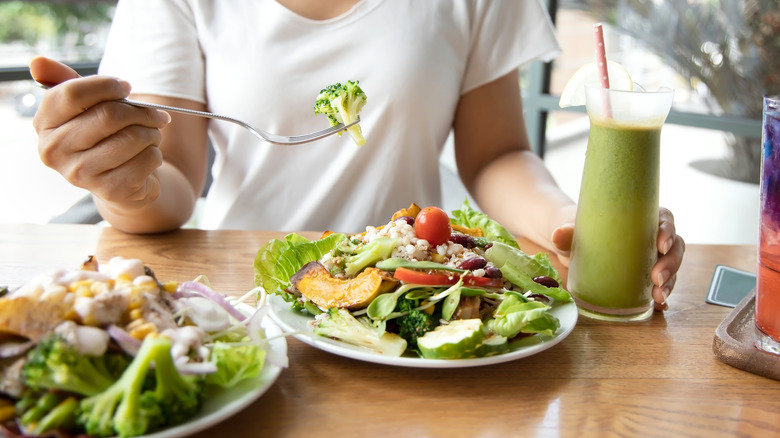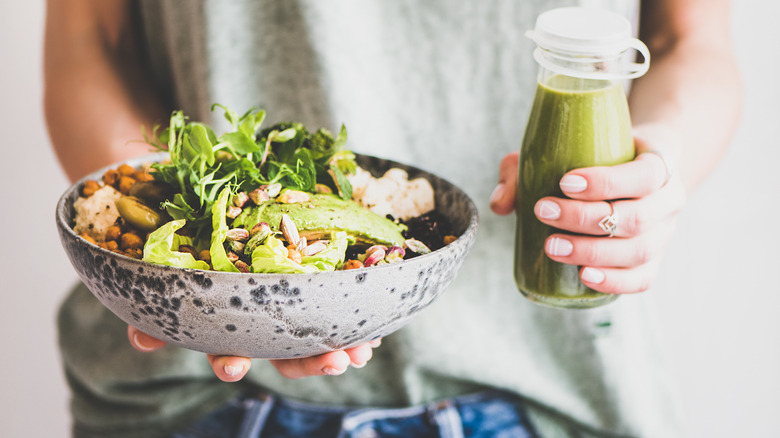What Is Volume Eating And Can It Help You Lose Weight?
The idea of eating more food to lose weight is nothing new. It's sort of the Excalibur of weight loss. Magic that can cut through the struggle of weight loss and get you down to a healthy weight that you can maintain. But, like Excalibur, it's also largely a myth. There is no quick fix for weight loss. And no matter how many diet trends come and go, people are still looking for the option that will work.
That's where volume eating comes in. If fad diets are Excalibur, think of volume eating like training with a regular sword until people think it's magic. It's not a myth and it's not an instant solution. Instead it's an approach to food that most diet plans touch on but ditch in favor of severe calorie or food restrictions. Shena Jamarillo, a registered dietitian, spoke with Livestrong in January 2020 and described volume eating as essentially a lifestyle change.
Rather than cut a certain food out completely or try to maintain an abnormally low calorie count, Jamarillo says that volume eating is about substituting high calorie foods with low calorie foods that are naturally nutrient dense. It runs counter to the idea that more food will always mean more calories and pushes people to focus on the nutritional quality of the food they're eating, not just the calorie count.
Can it help you lose weight?
Shifting your focus from a food's calorie content to a broad look at its nutritional value might not seem like the best move for weight loss. But it might just be the thing you need. Nutrient-dense foods like fruit, vegetables, and whole grains are packed with vitamins and trace minerals that your body needs. But more than that, they are loaded with fiber. Harvard Health Publishing has said for years that increasing fiber intake can lead to weight loss because fiber helps us feel more satisfied, reduces insulin resistance, and aids in digestion.
When you shift your eating habits to mirror the focus of volume eating, you're going to get more fiber in your diet. This ultimately leads to more control over your appetite and a set of habits that have you turning to healthy foods when you get hungry, rather than calorie-heavy options loaded with sugar or unhealthy fats. Meals based on fiber-heavy options are rounded out with lean protein and low fat dairy options which help satisfy cravings so you aren't too tempted to pop through a drive-thru. Over time, this approach to eating creates long-lasting habits that should aid in weight loss.
And that is the key to volume eating. It is an eating approach, not a diet. Each person can go at their own pace and that sets the stage for long-term lasting change. No meal is a "cheat meal" and there is no "failing" the diet. And as they grow more comfortable, they can include more meals until it's not a new system at all. It's just how they eat.


